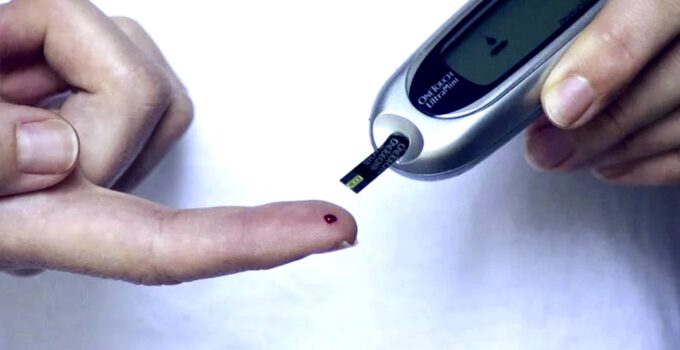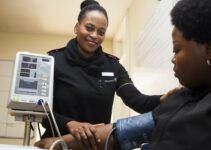Glucose monitoring system | Receiver | Do not do it | Abdomen, buttocks or arms | Retrospective | Adjust the glucose level | Glucose dynamics | Attention | Sharp increase in blood | Calibrate the sensor | Other events that affect glycemia
_______________
1. The continuous glucose monitoring system
The continuous glucose monitoring system allows you to evaluate the glucose concentration in the intercellular fluid. A sensor installed in the subcutaneous fat, measures glucose every 5 minutes, based on these readings, a graph is built that is recorded on a reader and can also be displayed on the pump screen.
_______________
2. The continuous glucose monitoring system consists of a sensor
The continuous glucose monitoring system consists of a sensor directly mounted under the skin and a receiver attached to it (Minilink). In the case of real-time monitoring, data is transferred to the pump and broadcast on its screen.
_______________
3. A receiver is a small device that is attached to the body with a band-aid.
A receiver is a small device that is attached to the body with a band-aid. If the insulin pump is used only for monitoring, the distance between it and the receiver should not exceed 2-3 meters.
_______________
4. The glucose monitoring sensor can work for about a week
At the moment, the glucose monitoring sensor can work for about a week. The duration of the sensor may depend on the individual characteristics of subcutaneous fat.
_______________
5. Do not install the sensor in places of lipodystrophy
Do not install the sensor in places of lipodystrophy, hemorrhage (bruising), scars, stretch marks – sensor readings may be unreliable.
_______________
6. A glucose monitoring sensor can be installed in the subcutaneous fat of the abdomen, buttocks or arms.
A glucose monitoring sensor can be installed in the subcutaneous fat of the abdomen, buttocks or arms. Avoid placing a catheter on the white line of the abdomen, less than 1 cm from the navel. On the hands, the sensor is mounted on the back of the shoulder. Care must be taken that the installation location of the sensor is not pinched by a belt or other tight clothing, as this can lead to distortion of the sensor signal.
_______________
7. Monitoring glucose levels can be retrospective
Monitoring glucose levels can be retrospective (professional), when the sensor readings are recorded on the receiving device, then analyzed by the doctor at the reception. Suitable for a group of patients who may be disturbed by sensor signals.
_______________
8. The patient can adjust the glucose level
And real-time monitoring, when data is displayed on the pump monitor, the patient can adjust the glucose level, focusing on the graphs. Suitable for trained, active patients, pregnant women and children.
_______________
9. To monitor glucose levels
To monitor glucose levels in real time in Europe, Medtronic pumps with the Guardian (722) and ParadigmVeo (754) systems are currently used. The latter has the function of turning off the supply of insulin when the threshold level of glucose is reached in order to prevent an episode of hypoglycemia.
_______________
10. Glucose dynamics are noted on the graph
In the insulin pump, trends in glucose dynamics are noted on the graph of the monitoring sensor readings. They are depicted as one or two up and down arrows.
_______________
11. Particular attention should be paid to the appearance of two arrows pointing down
Particular attention should be paid to the appearance of two arrows pointing down (a sharp decrease in glucose levels), because of the danger of developing an episode of hypoglycemia.
check here first before it will go worse
_______________
12. Sharp increase in blood glucose
The appearance of two up arrows indicates a sharp increase in blood glucose, for example, when consuming a large amount of fast-absorbing carbohydrates.
_______________
13. You cannot focus only on the sensor readings
When calculating the doses of insulin, you cannot focus only on the sensor readings. Since the sensor measures the level of glucose in the intercellular fluid, and not in the blood, there is a temporary delay between the readings of the sensor and the glucometer. With modern sensors, it is 5-10 minutes.
_______________
14. It is necessary to calibrate the sensor to adjust the sensor readings.
It is necessary to calibrate the sensor to adjust the sensor readings. To this end, every 12 hours, blood glucose readings measured with a glucometer are introduced into the pump. For greater accuracy, use the value of blood glucose in the most stable condition, in the morning, more than 2 hours after eating, in the absence of physical activity.
_______________
15. It is recommended to keep a diary of self-monitoring of glucose levels.
For the most effective assessment of indications, it is recommended to keep a diary of self-monitoring of glucose levels. At the appointment, the doctor will be able to correlate the sensor schedule with meals, physical activity and other events that affect glycemia. Thus, the doctor will be able to give more accurate advice on dose adjustment of insulin therapy.


